What Hi-Fi? Verdict
As a one-box solution, the Hisense C1 gets a lot right, but a lack of picture subtlety holds it back from must-buy status
Pros
- +
Sharp and clean image
- +
Impressive built-in speakers
- +
Quiet fan noise
Cons
- -
Colours lack subtlety
- -
Contrast could have more finesse
Why you can trust What Hi-Fi?
Hisense is making serious strides in the home cinema scene. Fresh from a What Hi-Fi? Award win with the excellent PL1 ultra short throw projector, it’s now trying something new with the C1. This boxy unit is designed to sit on a coffee table and offer cinematic thrills with maximum convenience in mind, but can it capture the same magic that the PL1 did?
An all-in-one beamer that combines a fully-featured streaming platform and a punchy built-in sound system, the C1 certainly makes a good first impression, but its picture performance is a more complicated matter.
Price
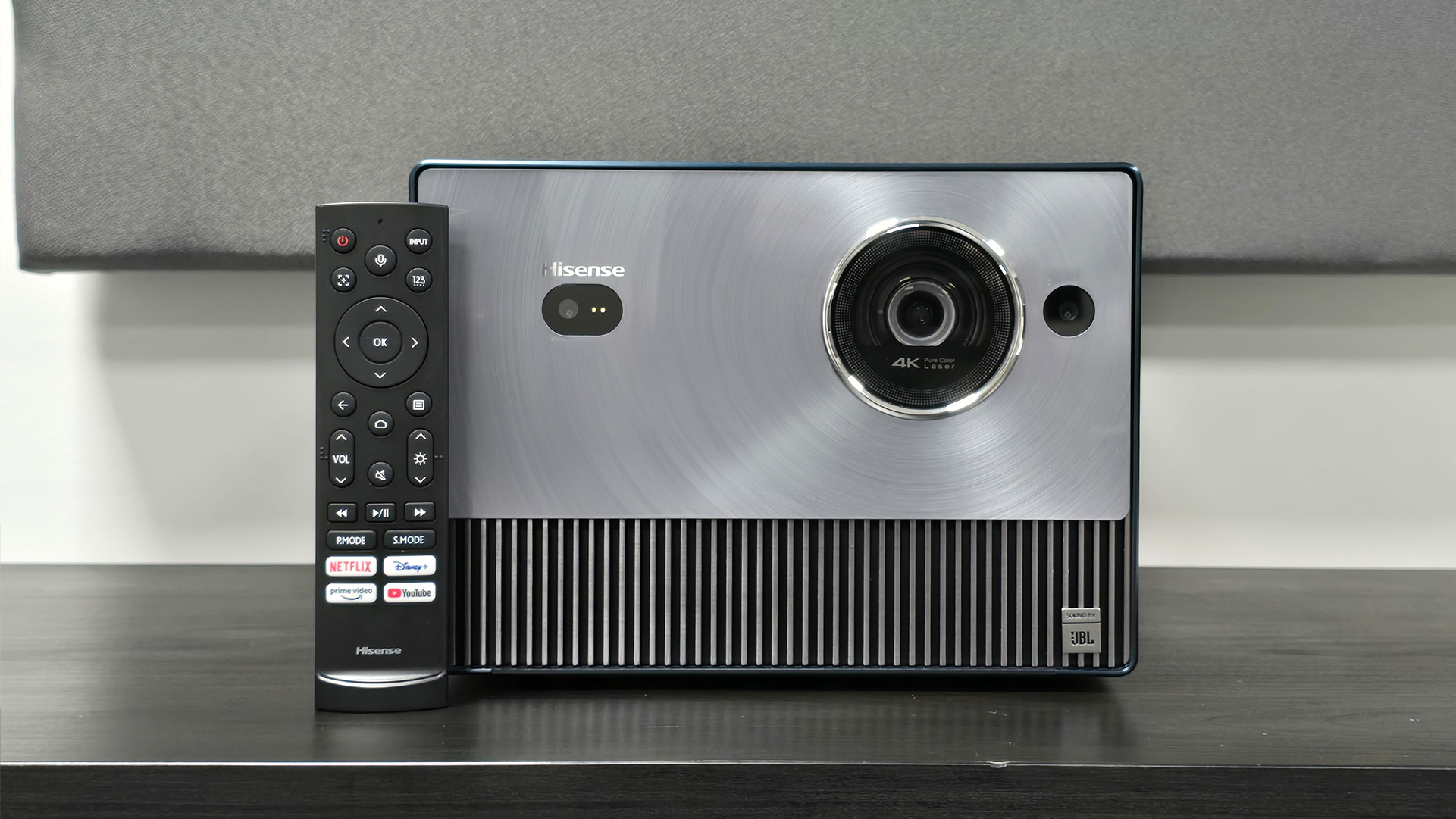
The Hisense C1 is priced at launch at £1999 / $1800 / AU$3499, which feels a bit steep when you consider existing rivals. For example, the Xgimi Horizon Ultra offers a very similar feature set for £1749 / $1599 / AU$3499, which is notably cheaper in the UK and US (but the same price in Australia).
Both models feature a built-in streaming platform and sound system, and a cubic design that is ideal for coffee table placement, although the Hisense features native Netflix support while the Xgimi doesn’t.
Build
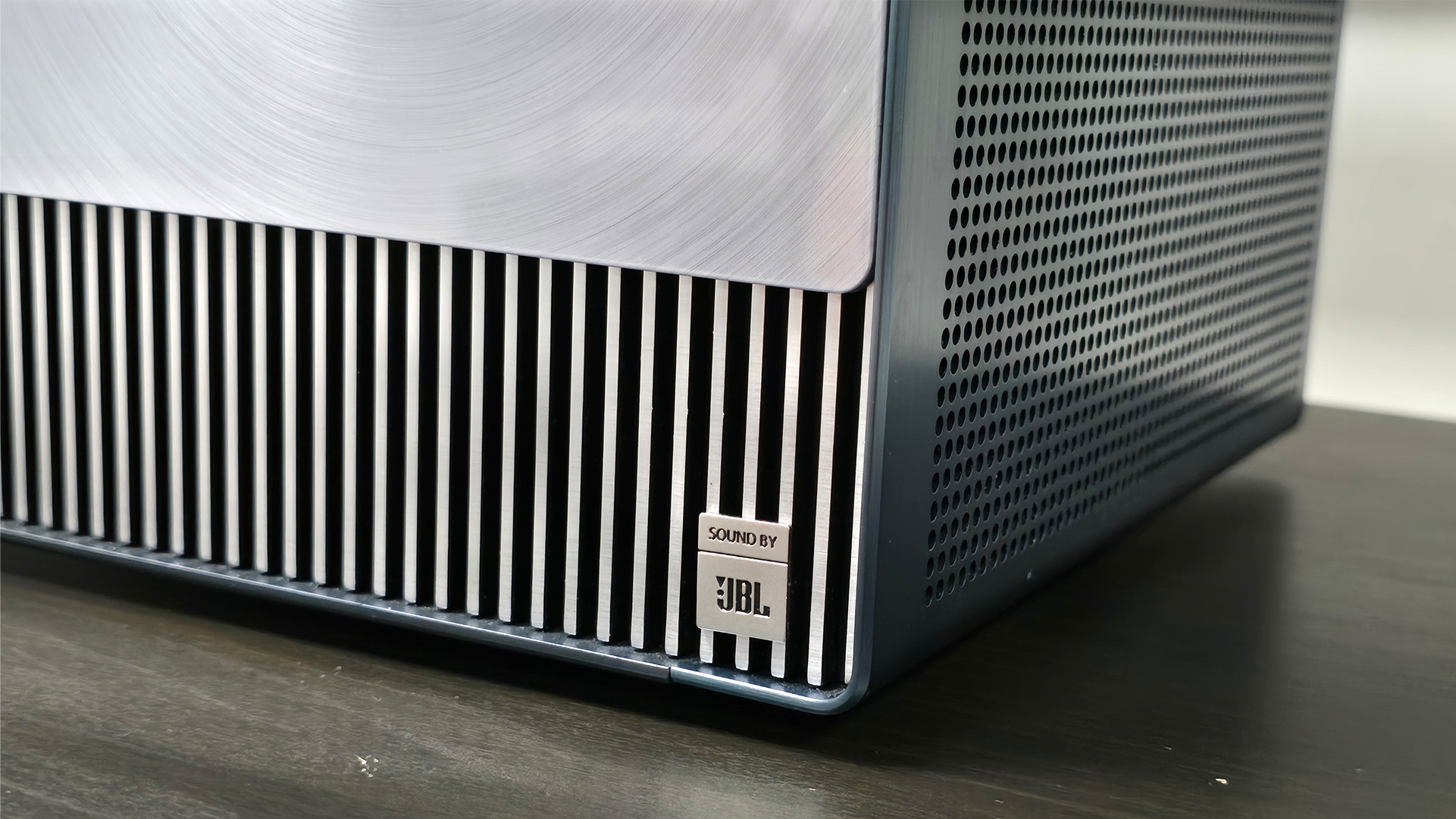
Hisense has nailed the look of the C1, and that is important when you consider it might be a frequent fixture in your living room. Four of the six sides of this unit are made of sturdy aluminium and feature a pleasing brushed metallic teal finish that we certainly approve of. The other two sides are constructed of plastic, with a grille running along the bottom front edge.
The unit is pleasingly quiet in operation, with fan noise kept to a minimum. Hisense claims 31dB and we have no reason to dispute that, as fan noise is impressively low even in the more demanding picture modes.
The controller, on the contrary, isn’t as high quality. It feels notably plasticky in the hand, although it's certainly functional in operation. It features backlighting, which is nice to have when operating the projector in our dark home cinema room, but this only activates if you press a button. This ultimately leads to us pressing the rewind button when we mean to switch picture modes more times than we’d care to admit. Hisense has included a quartet of useful streaming shortcut buttons for Netflix, Disney Plus, Prime Video and YouTube.
The latest hi-fi, home cinema and tech news, reviews, buying advice and deals, direct to your inbox.
Ultimately, the Hisense features sharp styling, but its Xgimi competitor is more to our taste. The leatherette finish, motorised fabric lens cover and metal remote make for a more premium feeling unit, but the Hisense follows closely behind.
Features
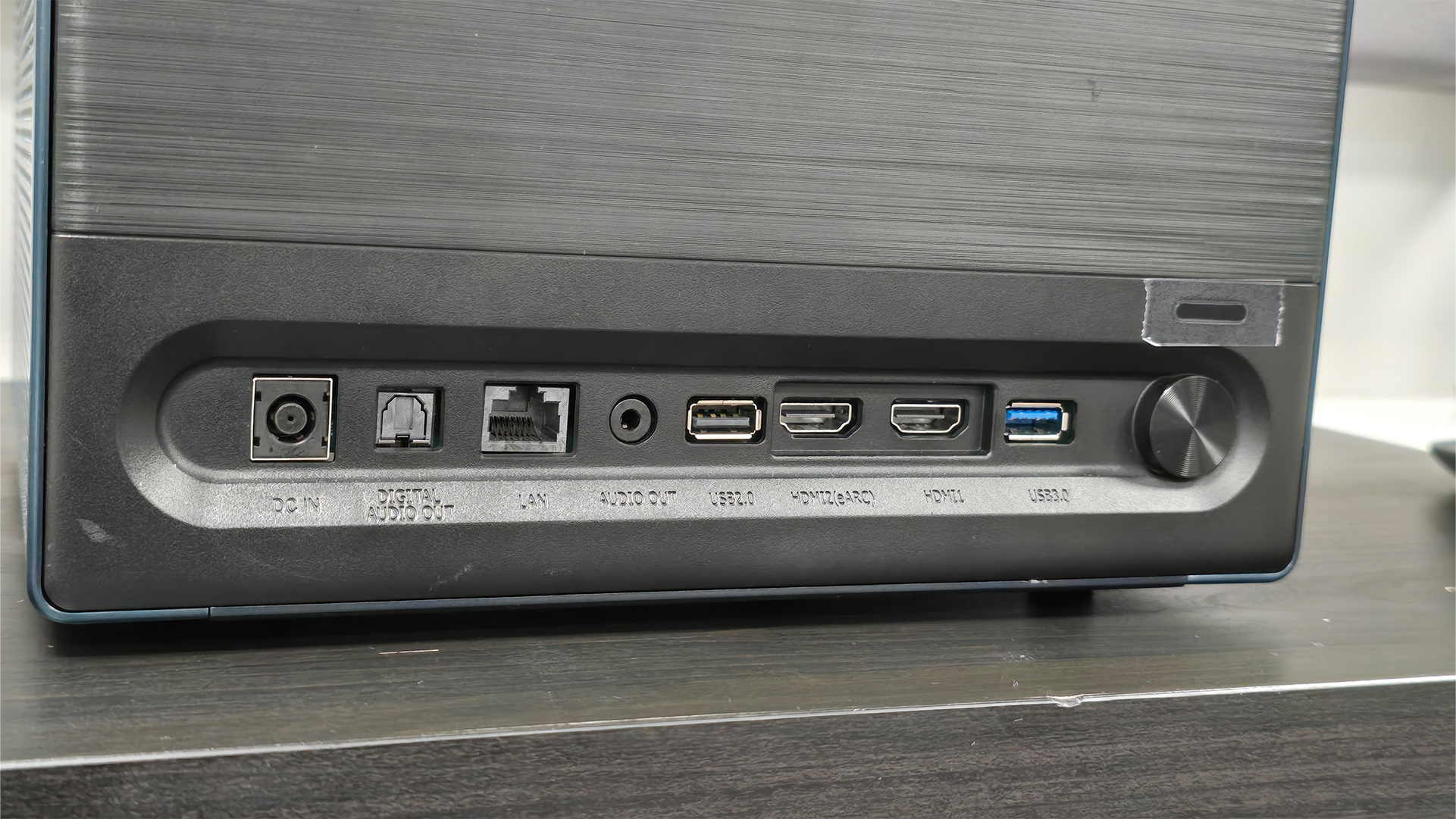
The C1’s feature set is arguably its biggest selling point, as it is packed to the brim with picture, sound and streaming tricks. We’ll start with the projection system itself, which features Hisense's new TriChroma DLP laser light source.
As the name may suggest, it features three separate lasers that individually create the red, blue and green parts of the image, which Hisense claims results in an impressive 110 per cent coverage of the BT2020 colour space. It produces 8 million pixels with a maximum resolution of 3840 x 2160 (4K), albeit through the power of pixel shifting. Surprisingly, the C1 features an unusually low contrast ratio of 1600:1. For reference, the Epson EH-TW7100 features a claimed 100,000:1 contrast ratio. This is likely due to the fact that Hisense markets this projector to be used in environments with lots of ambient light, such as living rooms and gardens. Hisense rates this light source at 1600 ANSI Lumens, which should make it suitable for viewing in such environments. Hisense also rates this light source for up to 25,000 hours of use, which means you shouldn’t have to worry about servicing or replacing the unit for quite some time.

Projector type Laser (TriChroma)
Screen size 65- to 300 inches
HDR Dolby Vision, HDR10+, HDR10, HLG
Native resolution Supports 4K via DLP pixel shifting
Claimed input lag in gaming mode ≤ 60 ms
Dimensions (hwd) 18 x 30 x 22cm
The C1 features HDR support in all of the notable formats, including HDR10, HDR10+, Dolby Vision and HLG – which warrants a major thumbs up from us. It also has Filmmaker mode, which is a rarity on projectors such as this but very much welcome. Hisense also claims impressive flexibility of image size, as this unit features an adjustable projection size of 65- to 300-inches.
Just below the lens, we find a speaker grille adorned with a 'sound by JBL' badge. This is a hint towards the dual 10W speakers squeezed into this unit, which JBL has had a hand in tuning. These speakers support Dolby Atmos for object-based 3D audio, which is a nice touch, but these speakers are unsurprisingly no match for a dedicated speaker system.
Spinning the unit around to the rear, we can take a look at the port selection, which is unfortunately a bit limited. There are only two HDMI sockets to be found, one of which is labelled for eARC, so if you’re planning on connecting a soundbar or AVR/speaker system combo, you'll have just one HDMI input left for a source device. Elsewhere, there are two USB connectors (one 2.0, the other 3.0), audio out 3.5mm jack, optical audio out, LAN and power connections.
The HDMI sockets are also a bit of a mixed bag. HDMI 1 is rated at the 2.0 standard, while HDMI 2 is 2.1. The latter is the aforementioned eARC socket, but it also supports ALLM if you’re planning on hooking up a PS5 or Xbox Series X. What you won't find is VRR, as this unit staunchly remains at 60Hz, which will be a disappointment to gamers on the next generation consoles. It will also mean that gamers will have to decide between ALLM or eARC audio, which feels like a compromise you shouldn't have to make.
There are a small number of wireless connectivity features on the C1 including a screen-sharing function for mirroring a smartphone or tablet, as well as Apple AirPlay 2, which is ideal for sharing content from an iPhone, iPad or Mac device.
Rotating the cube once again to show off its top edge, we find a power button, play/pause button, plus and minus volume controls, and an LED indicator light to signify if the unit is powered on or off.
The set-up of the C1 is mostly painless, as the combination of the thorough automatic lens adjustment and VIDAA operating system makes for a fairly hands-off experience. Upon powering up the projector, it will automatically adjust the picture to the surface it's being projected onto, ensuring that it is both straight and focused. Our screen with its big borders does prove somewhat troublesome for the C1’s auto adjustment features, but a quick manual tweak is all that is necessary to solve the issue.
By default, the projector is set to adjust its picture every time it's moved. This can of course be useful, but we find it to be slightly over-enthusiastic when we try to gently pivot our projector stand. There are also no adjustable feet or physical lens controls, so we have to rely on the automatic calibration to get it right, however, the system manages to correctly tweak the picture in most cases.
Getting into the VIDAA system is easy too, via the on-screen controls or scanning a QR code with your phone. This should be very familiar for anyone who has used a Hisense TV before, as it’s nearly identical. There’s a hearty list of streaming apps on offer here, with the likes of Amazon Prime Video, Disney Plus, Apple TV+ and more, as well as UK-specific apps such as BBC iPlayer, ITV X and Channel 4. Interestingly, Netflix is included on this projector, something that isn't true of Xgimi's projectors.
Netflix licensing has proved pesky for some manufacturers that use the Android TV platform, leaving you to stream from your phone or find workarounds to download the app. Hisense has circumnavigated this issue, though, which should be a relief for those who want hassle-free streaming.
Picture
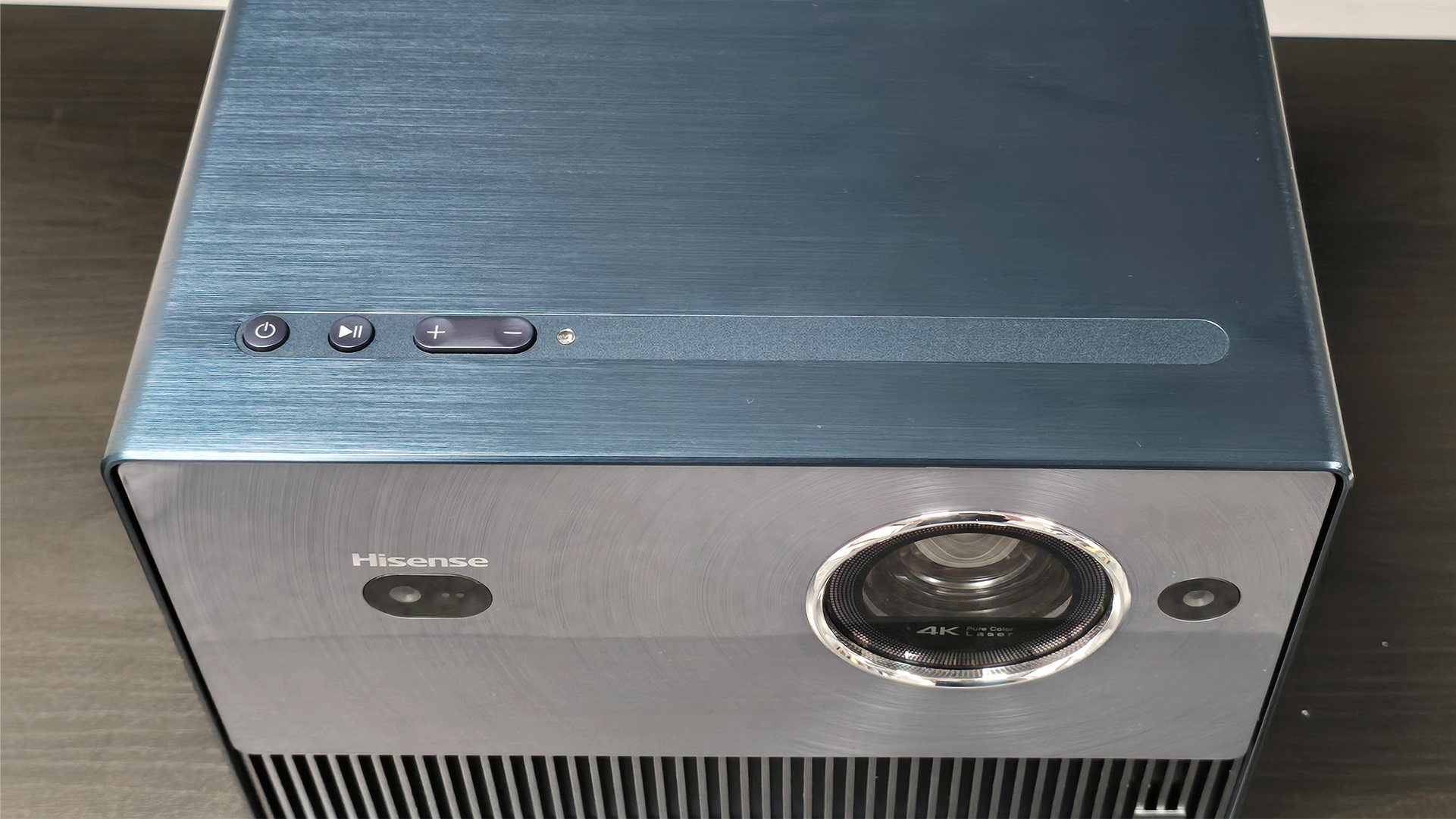
Hisense has gone big and bold with the C1, and that’s noticeable right from the get-go. While sharpness and punch are at the forefront of Hisense’s picture priorities, it seems as though subtlety falls by the wayside as a consequence.
Firing up Top Gun: Maverick in Filmmaker mode, it's apparent that this beamer can produce a crisp image. There is an impressive level of detail to the skin texture of the titular pilot’s face as well as the material patches on his bomber jacket. We’re also impressed with how clean-cut and sharp the outlines of the characters are without looking overly etched.
It could also be argued that the punchy colour presentation works for a bombastic Hollywood flick such as this, with colours that are engaging and exciting. Certainly, animated movies such as Spider-Man: Across the Spider-Verse feel right at home on this projector, as the bold art style and colours are well-suited to how it performs.
Top Gun highlights a few flaws in the picture performance, though. Colours are the biggest issue, as the Filmmaker mode casts an overbearing sepia effect on the image. The credits that flash up during the opening of the film are supposed to be white but are closer to yellow, immediately drawing our attention. We attempt to rectify this by adjusting the colour settings and colour temperature, but that throws things off-kilter in spectacular fashion, as Maverick’s rescue helicopter appears in a bizarre, nearly unsettling shade of red.
Instead, we find that the best way to resolve this is to switch to the HDR Day picture preset and adjust the motion settings to compensate for its default over-exuberant processing. Some will prefer to switch the motion processing off entirely, but our preference is the 'Film' motion setting, which adds a touch more fluidity to fast-moving objects such as fighter jets. This motion processing mode feels well balanced as it reduces judder without looking unnaturally smooth, although there are more granular options to tweak the motion settings to suit your preferences.
Switching over to another spectacular sequel made decades after the original, Blade Runner 2049 offers up a great example of how this projector handles dark scenes. We use the scene in which Officer K meets Mariette in a bustling market, as this scene features challenging lighting and a lot of dark sections. On the positive side, the neon lights pop with impactful vibrancy and there is plenty of detail in clothing and environmental textures too.
Unfortunately, black depth is not a strength of the C1. We suspected this would be the case when the letterboxing bars on Top Gun were grey rather than black, but Blade Runner cements our fears. The way the projector handles contrast is heavy-handed, too, which results in poorly defined dark details.
This is further evident in Dune, as the scene in which Paul Atreides strolls along the cliffs of Caladan in a dark jacket tells all. Dark detail is severely lacking, as Atreides’ jacket looks like a black homogenous shape, and we can’t make out the collar of the jacket because of this. Contrast is also important when it comes to replicating three-dimensional depth, which means it should be no surprise when we say the Hisense can easily be bettered. A shot of a large spacecraft emerging from the water looks flat in comparison to when we view it on an Epson alternative, lacking the three-dimensional impact we value from other models.
Sound
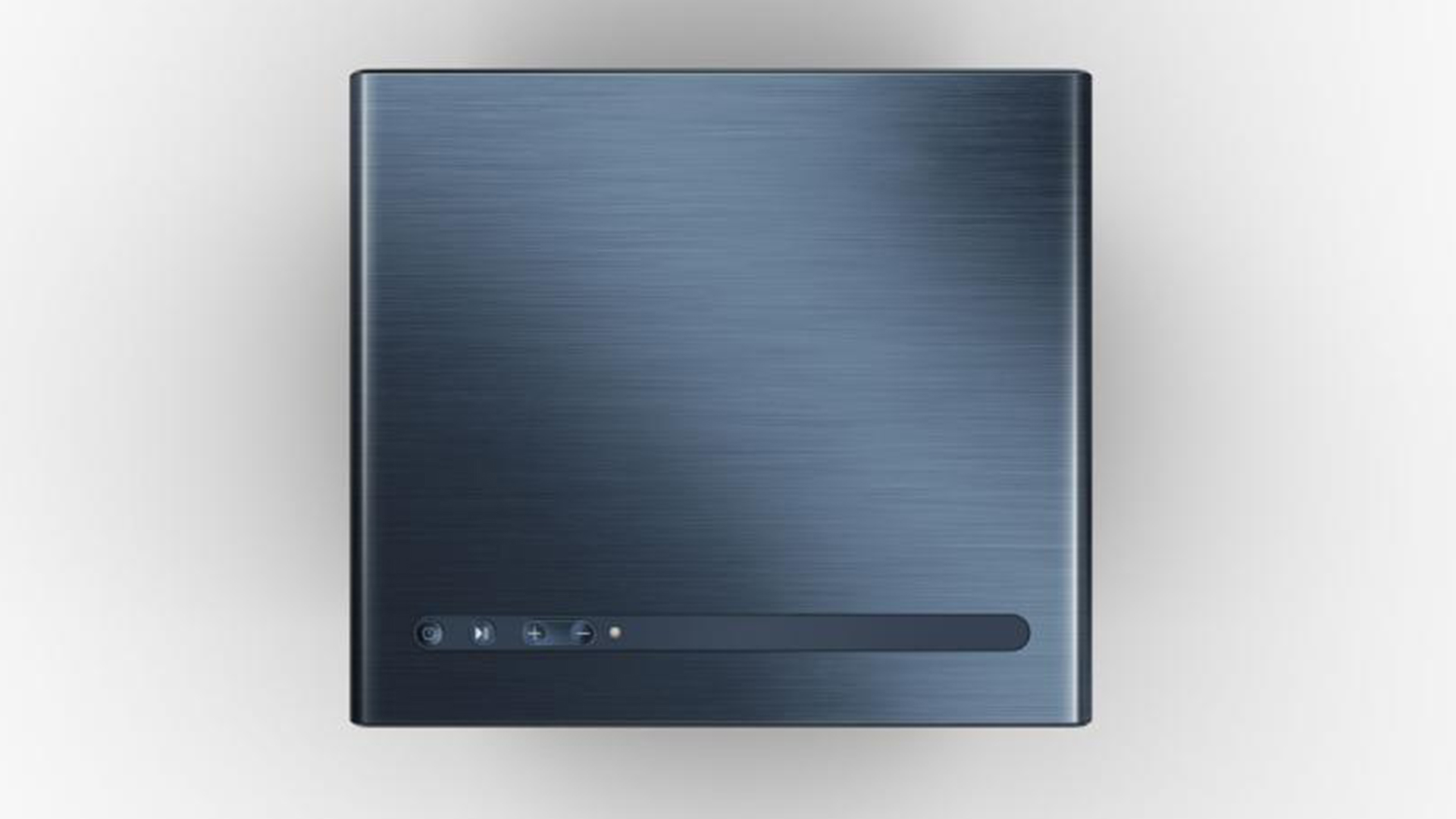
While we wouldn’t blame you for bracing yourself to read about yet another weak built-in projector sound system, there is no need to worry here – the Hisense C1 features a genuinely impressive set of speakers.
While it certainly won’t rival a dedicated external audio device, the built-in speakers offer plenty of volume and a decent amount of bass weight. Jumping back to Blade Runner 2049, there is an impactful thud and crash as Sapper Morton slams Officer K into the wall during their suspenseful scrap at the beginning of the movie. The dialogue that follows as they end their skirmish is clear, and while low-level dynamics aren’t a standout, there is some detail and texture to the vocal presentation.
Top Gun: Maverick also demonstrates the C1’s sonic chops, as the sound of a fighter jet soaring through the sky is replicated to surprising effect. The sound travels between the speakers to emulate the jet travelling from left to right, and while the sound isn’t exactly room-filling, it does extend outwards to create a mostly effective soundstage.
We appreciate the sense of scale and space that the projector attempts to replicate with its built-in speakers, although it’s not entirely perfect. It does get a bit grating at higher volume levels, and scenes with tricky low-end (such as the infamous Flight To The LAPD track from Blade Runner 2049) can create an unpleasant distortion at higher volumes. That all being said, this is still much better sound than that produced by most projectors.
Verdict

The Hisense C1 has a lot going for it; easy set-up, fully-featured streaming, impressive sound and a sharp, punchy picture. All of this fits into a convenient enclosure that really sells the cinema-in-a-box concept.
We wish that Hisense had paid a bit more attention to picture subtleties, reined in the over-ripe colours and had better contrast control; but otherwise, this is a very likeable bit of home cinema kit.
SCORES
- Picture 4
- Sound 4
- Features 4
MORE:
Read our review of the Xgimi Horizon Ultra
Also consider the Epson EH-TW7100
Read our BenQ W1800
Best projectors: Full HD, 4K, and short-throw
What Hi-Fi?, founded in 1976, is the world's leading independent guide to buying and owning hi-fi and home entertainment products. Our comprehensive tests help you buy the very best for your money, with our advice sections giving you step-by-step information on how to get even more from your music and movies. Everything is tested by our dedicated team of in-house reviewers in our custom-built test rooms in London, Reading and Bath. Our coveted five-star rating and Awards are recognised all over the world as the ultimate seal of approval, so you can buy with absolute confidence.


